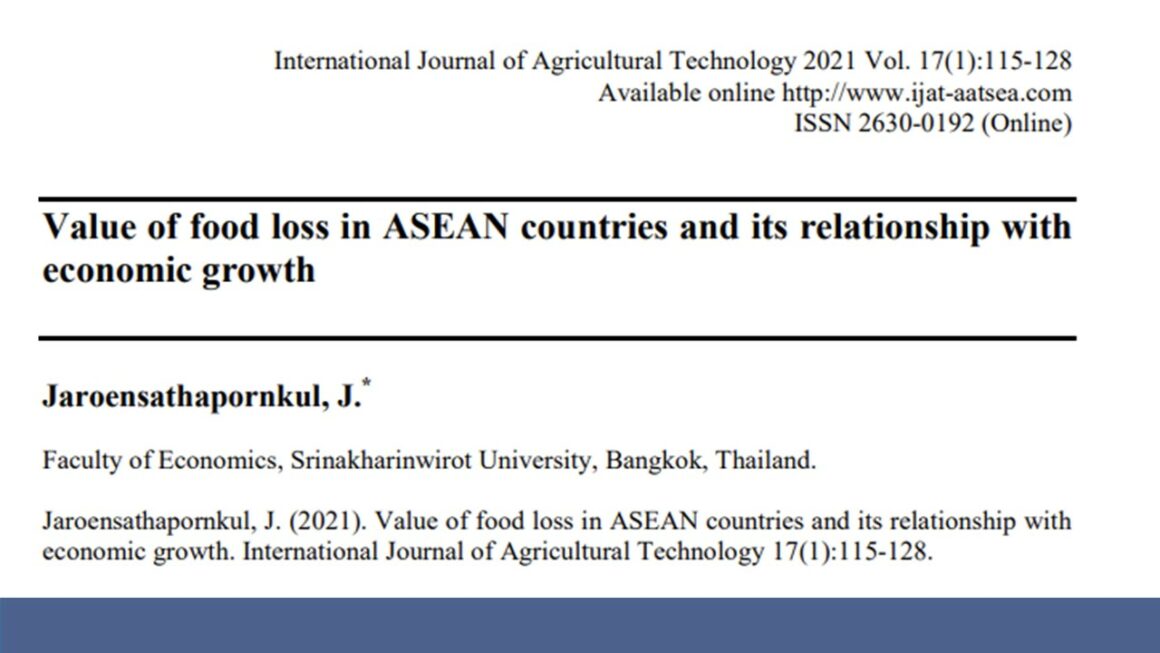The research finding showed estimates from an econometric model suggested that the increased food loss value happened at the price of ASEAN countries’ economic growth. Therefore, economic development should not just concentrate on increasing conventional GDP, but also take sustainability into account. Every nation should have an objective for “inclusive economic growth”. The “circular economy for food” economic system is advocated for adoption in order to decrease production and selling losses. To reduce the loss of agricultural products, the government should direct more funding to research and development (R&D) of post-harvesting technology and logistics system development.
In comparison with Indonesia, Malaysia, the Philippines, and Thailand, the Food Loss (FL) score in Cambodia, Laos, Myanmar, and Vietnam (CLMV nations) was substantially greater. As a percentage of GDP, Cambodia had the highest FL value, which indicated that CLMV countries had less advanced post-harvesting and processing technologies as well as transportation. In contrast, Thailand and Malaysia had FL values that were only 0.17% and 0.07%, respectively, of GDP.
Additionally, rice displayed the highest FL value in seven of these nations, but palm oil displayed the highest FL value in Malaysia. On the other hand, the FL value of palm oil in Indonesia climbed steadily at a rate of 16% annually on average. In Indonesia, the ratio rose sharply in the 2000s, rising from 3.60% in 1991–2000 to 24.43% in 2001–2010. In addition to rice, it was revealed that significant FL values may also be found for bananas, cassava, maize, sugar cane, and sweet potatoes in CLMV nations.
For full text please visit: http://www.ijat-aatsea.com/pdf/v17_n1_2021_January/9_IJAT_17(1)_2021_Jaroensathapornkul,%20J.pdf


